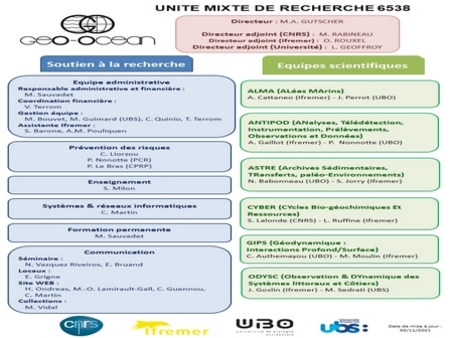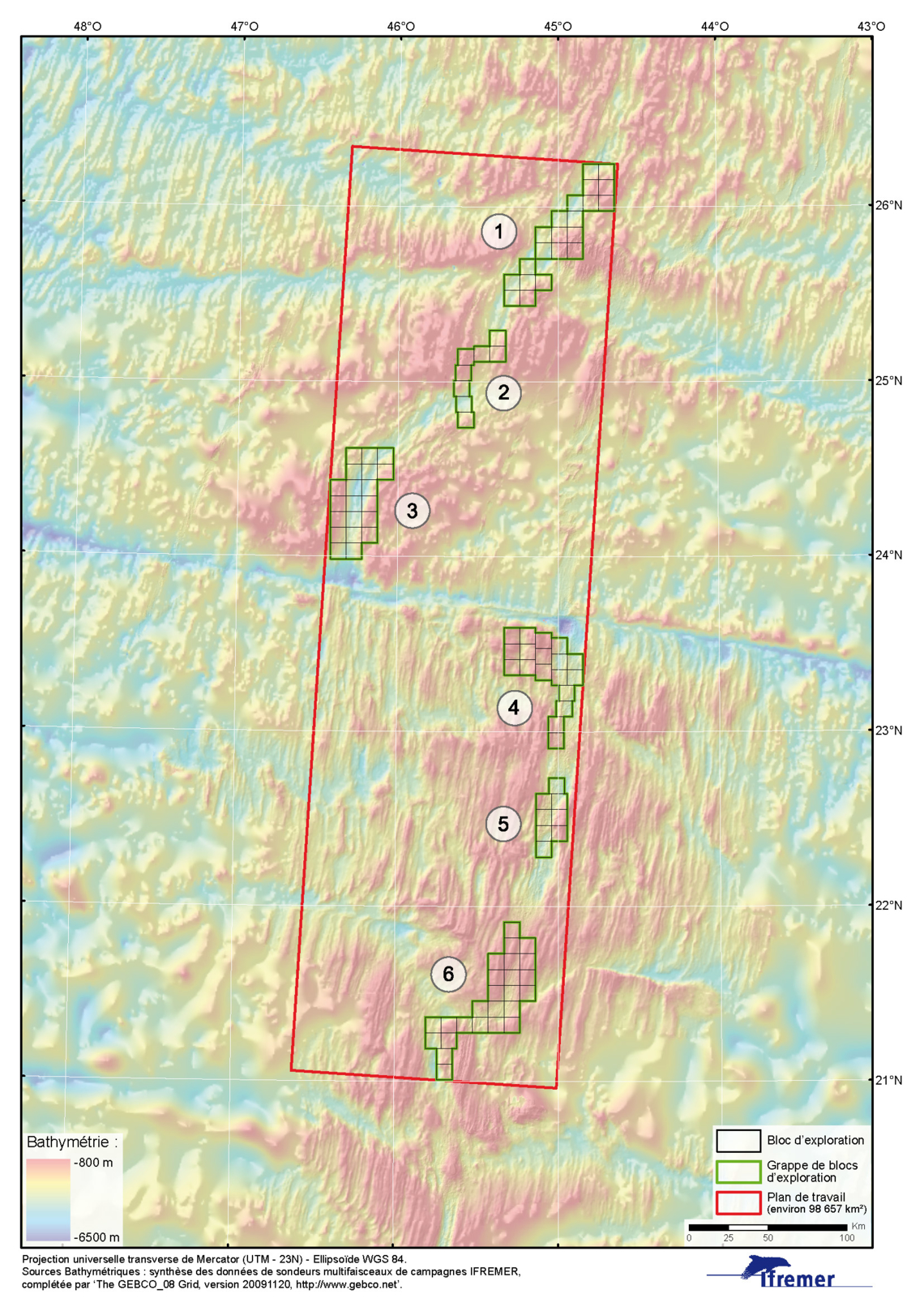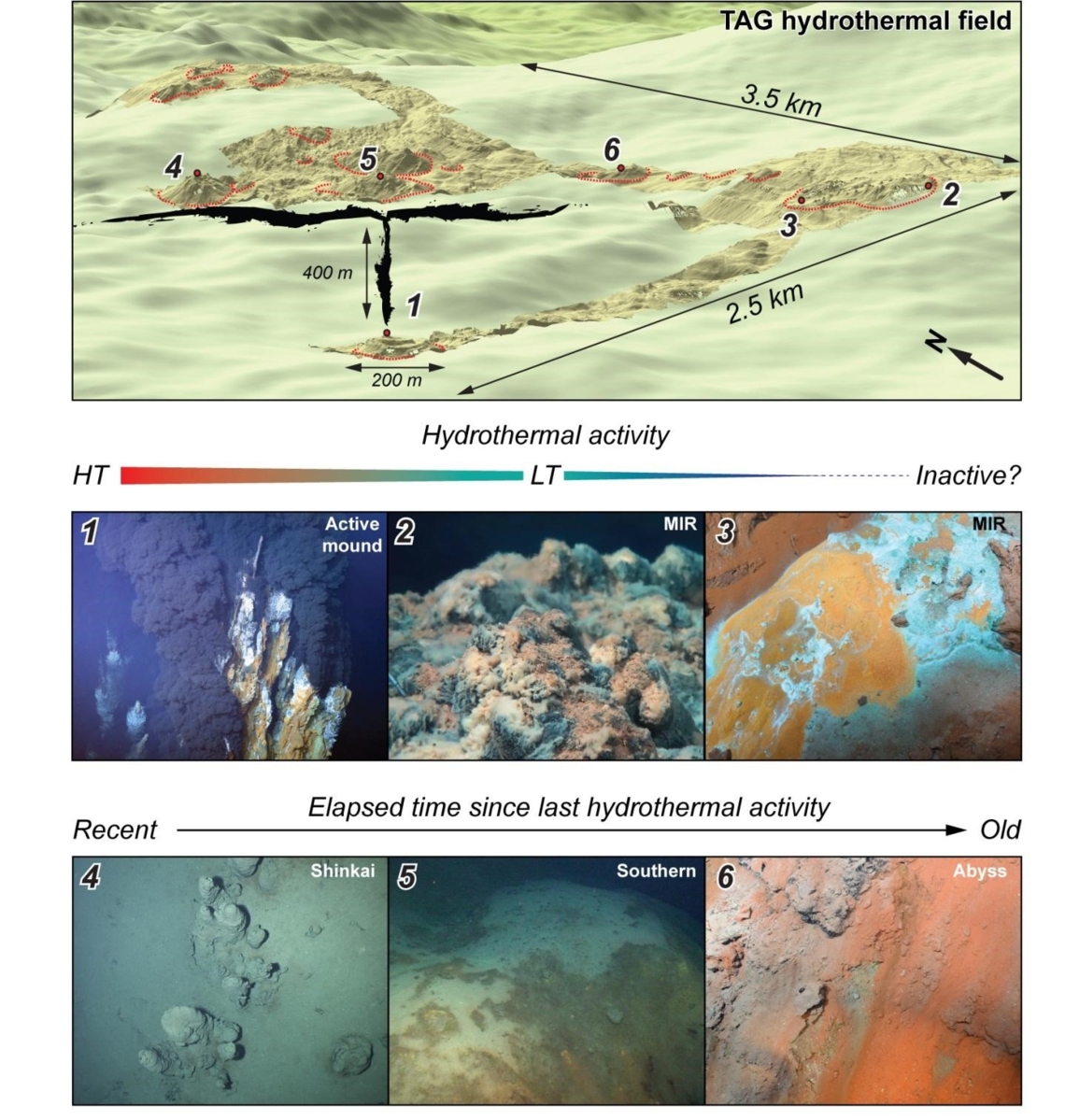What is the sulphide exploration contract and what are the implications for Ifremer?
What is the polymetallic-sulphide exploration contract?
In 2012 and in the name of the French State, Ifremer requested and defended an exploration contract for polymetallic sulphides in international waters of the Atlantic Ocean. The contract was signed with the International Seabed Authority in November 2014 and was awarded for 15 years. In the application file, France committed to carry out at least one exploration expedition every five years.
The contract exploration zone is located on the Atlantic Ridge between 21°N and 26°N. It consists of 100 blocks of 10 km by 10 km, for a total surface area of 10 000 km2.
The blocks are grouped into “clusters” and the French contract includes six clusters. The largest consists of 25 blocks (cluster 6), and the smallest eight blocks (cluster 2 and cluster 5).
What is Ifremer's role?
As a research institute, Ifremer provides expertise in the field of exploration of hydrothermal systems and collects data and knowledge on these exceptional environments.
The societal and economic issues currently gravitating around hydrothermal systems beckon us to answer the following fundamental questions:
- Does the resource potential for polymetallic sulphides really exist?
- If so, what type of deposit could constitute a resource?
- and which should we safeguard?
- What are the mineralogical, chemical, biological and microbiological characteristics of this resource?
- Are they unique?
- What are the differences and similarities with other hydrothermal deposits, such as metal-free deposits?
- How are hydrothermal deposits spatially distributed, both on the contract scale and on the scale of a hydrothermal field of a few tens of km²?
- Is there any connectivity between hydrothermal fields located several tens to hundreds of kilometres apart?
Through answering these questions, we will be able to define the spatial extension of what a mining district could be and thus the vulnerable marine environments potentially impacted by mining activities. These are high expectations for the sizing of future preservation strategies in the event of deep-sea exploitation.
The work already achieved in the field of geosciences, biology and microbiology has enabled Ifremer scientists to propose that active sulphide sites, such as black smoker areas and associated fauna, should be considered vulnerable marine ecosystems and therefore protected from any potential exploitation.
How is the HERMINE2 exploration expedition organised?









